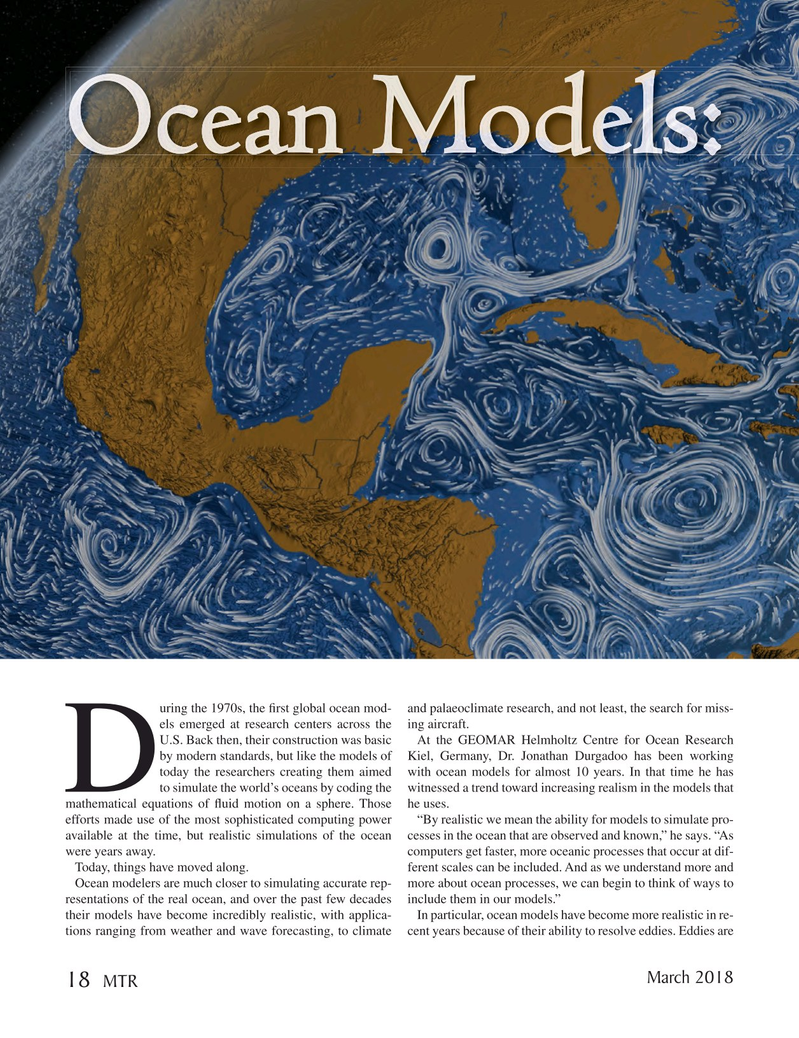
Page 18: of Marine Technology Magazine (March 2018)
Oceanographic Instrumentation: Measurement, Process & Analysis
Read this page in Pdf, Flash or Html5 edition of March 2018 Marine Technology Magazine
uring the 1970s, the ? rst global ocean mod- and palaeoclimate research, and not least, the search for miss- els emerged at research centers across the ing aircraft.
U.S. Back then, their construction was basic At the GEOMAR Helmholtz Centre for Ocean Research by modern standards, but like the models of Kiel, Germany, Dr. Jonathan Durgadoo has been working today the researchers creating them aimed with ocean models for almost 10 years. In that time he has
D to simulate the world’s oceans by coding the witnessed a trend toward increasing realism in the models that mathematical equations of ? uid motion on a sphere. Those he uses.
efforts made use of the most sophisticated computing power “By realistic we mean the ability for models to simulate pro- available at the time, but realistic simulations of the ocean cesses in the ocean that are observed and known,” he says. “As were years away. computers get faster, more oceanic processes that occur at dif-
Today, things have moved along. ferent scales can be included. And as we understand more and
Ocean modelers are much closer to simulating accurate rep- more about ocean processes, we can begin to think of ways to resentations of the real ocean, and over the past few decades include them in our models.” their models have become incredibly realistic, with applica- In particular, ocean models have become more realistic in re- tions ranging from weather and wave forecasting, to climate cent years because of their ability to resolve eddies. Eddies are
March 2018 18 MTR
MTR #2 (18-33).indd 18 MTR #2 (18-33).indd 18 2/20/2018 3:32:43 PM2/20/2018 3:32:43 PM

 17
17

 19
19
